Microsoft Windows 8 tablet upgrade preview
We upgrade the Windows 7 Fujitsu Q550 tablet to give users an idea of what to expect when the touch screen optimised Windows 8 is released in October.
Apps
Microsoft bundles a number of Metro applications with Windows 8 such as Maps, an email client, stocks and weather. Microsoft will only include Word, Excel and PowerPoint on the standard installation of Windows RT.
The standout Metro application is Internet Explorer 10, which brings huge improvements to the web browsing experience, even on older hardware. Users will have the ability to browse websites like they would be able to on a laptop or desktop.
Microsoft has tweaked the interface slightly, so the browser looks like its Windows Phone counterpart. The address bar is now located at the bottom of the screen as opposed to the top.
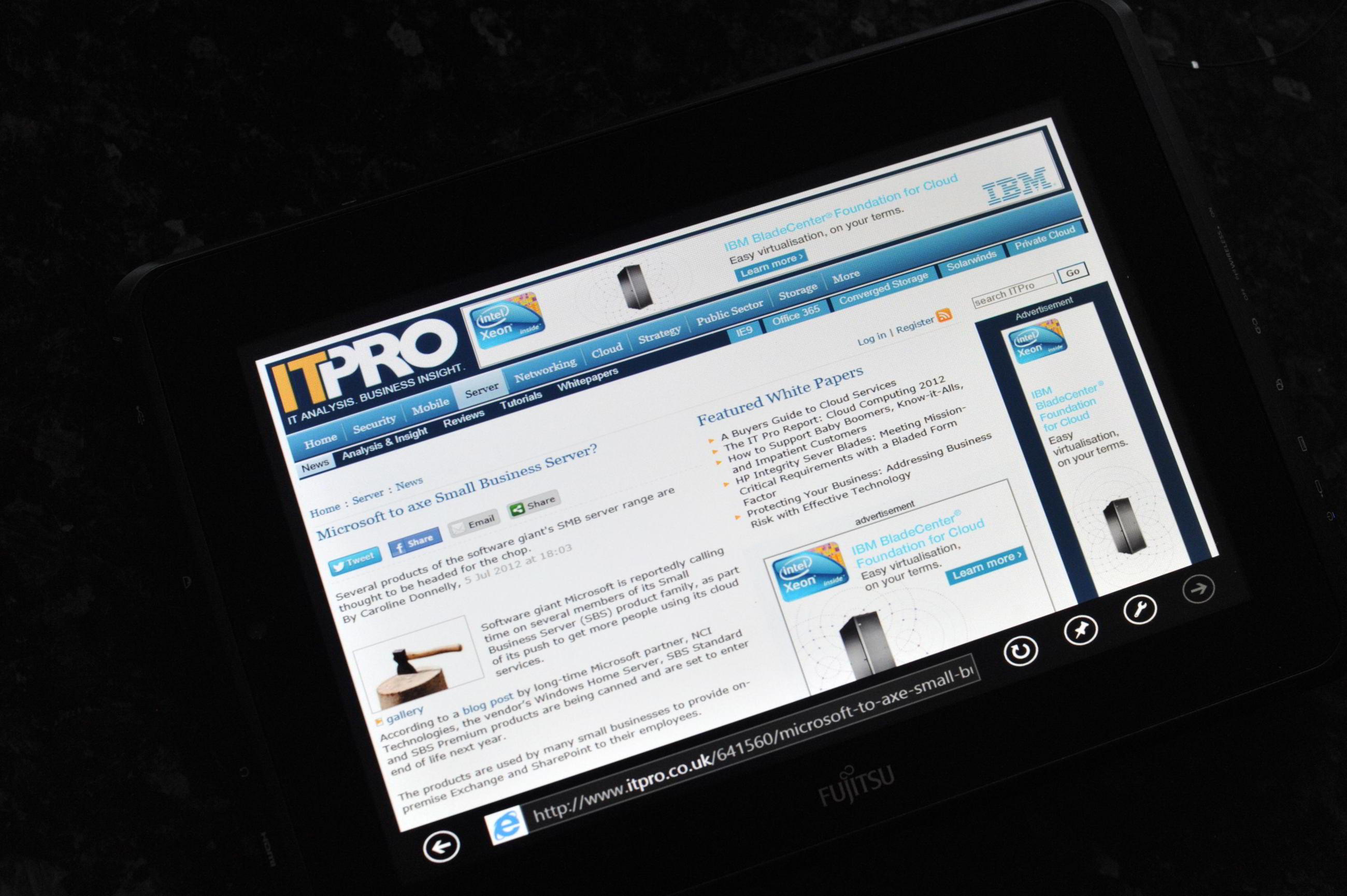
Key features will include enhanced HTML5 support, beefed up hardware acceleration for quicker page rendering times and integrated Adobe Flash support. Microsoft has clearly put a lot of effort into IE 10 and Windows 8 tablets are shaping up provide the most comprehensive internet experience we have seen on the form factor to date.
As for installing applications, Windows 8 makes extensive use of the Windows Store, an app store Windows Phone users in particular with find familiar. Microsoft has made the job of installing applications on a Windows 8 tablet almost identical to that of installing applications on iOS or Android tablets. It's quick - although there are a distinct lack of apps at present, which estimates suggesting they number in the hundreds. Microsoft has some catching up to do if it wants to attract users as the iOS and Android ecosystems have hundreds of thousands of apps.
Microsoft has also talked of private app stores for enterprises wishing to deploy applications only to employees. It is this feature which could help Windows 8 and Windows RT tablets win favour with system administrators.
Overall
Microsoft's upgrade procedure was a doddle and whilst drivers may be required for some tablets, the firm should be praised for making the step up from Windows 7 as simple as possible. We immediately noticed a significant boost in performance without any changes to the hardware, while the Metro interface works well even with older, less responsive screens.
Get the ITPro daily newsletter
Sign up today and you will receive a free copy of our Future Focus 2025 report - the leading guidance on AI, cybersecurity and other IT challenges as per 700+ senior executives
We found Windows 8 will not only extend the life of devices such as the Q550 but also offer a boost in performance. Even the battery life didn't suffer, with the Q550 managing to notch up between four to six hours on a single charge, the same as it did running Windows 7.
It is important to note that we tested Microsoft's Windows 8 Preview Release, but even at this beta stage the improvements over Windows 7 on tablets are noticeable. We can only expect Microsoft to hone Windows 8 further before its full release.
With Microsoft's x86-based Surface tablets set to be priced around the same as high-end Ultrabooks (1000), few businesses are going to rush out and buy Windows 8 devices for all employees. Upgrading existing devices will be the primary option for many users and from our experience it is shaping up to be a positive step, especially for tablets.
Verdict
Microsoft will allow Windows XP, Vista and Windows 7 users to upgrade to Windows 8 for $40, and from what we have seen so far, this looks like a bargain. Business users with a Windows 7 tablet should give the upgrade when the final code is released, and if possible run dual-boot configuration with Windows 7, as there will no doubt be some bugs initially..
Display: 10.1in Anti-glare, 1,280 x 800 resolution OS: Windows 7 Professional 32-bit upgraded to Windows 8 Processor: 1.5GHz Intel Atom Z670 RAM: 2GB Storage: 62GB internal SSD Camera: 1.3 megapixels rear-facing, 0.3 megapixels forward-facing Bluetooth: v2.1 + EDR Wi-Fi: 802.11 a/b/g/n Ports: 1 x USB 2.0, 1 x HDMI, 1 x proprietary dock connector Slots: 1 x SDHC memory card slot Dimensions: 275 x 18 x 193 mm (WxDxH) Weight: 872g Battery: Lithium Polymer 5240mAh
-
 The Race Is On for Higher Ed to Adapt: Equity in Hyflex Learning
The Race Is On for Higher Ed to Adapt: Equity in Hyflex LearningBy ITPro
-
 Google faces 'first of its kind' class action for search ads overcharging in UK
Google faces 'first of its kind' class action for search ads overcharging in UKNews Google faces a "first of its kind" £5 billion lawsuit in the UK over accusations it has a monopoly in digital advertising that allows it to overcharge customers.
By Nicole Kobie
-
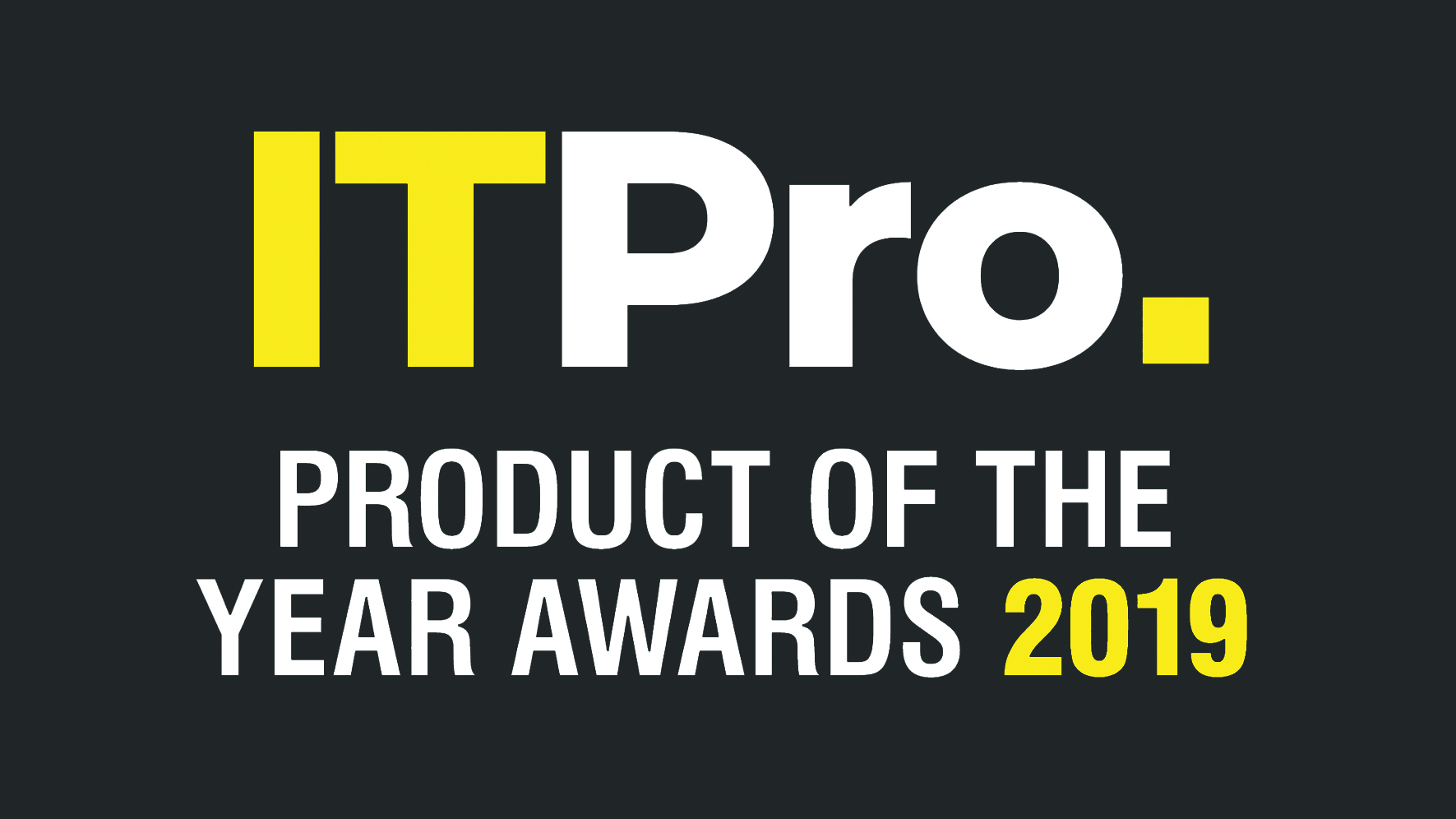 The IT Pro Products of the Year 2019: All the year’s best hardware
The IT Pro Products of the Year 2019: All the year’s best hardwareBest Our favourite equipment from the past 12 months
By ITPro
-
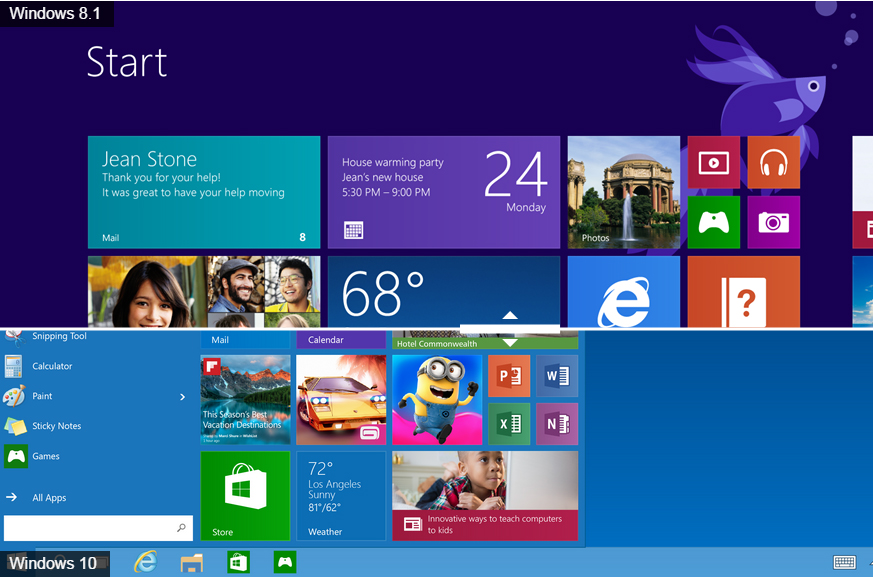 Windows 10 vs Windows 8.1: Which was the best operating system?
Windows 10 vs Windows 8.1: Which was the best operating system?Vs We rate Windows 10 vs Windows 8.1 in a number of key categories for professional use
By Barry Collins
-
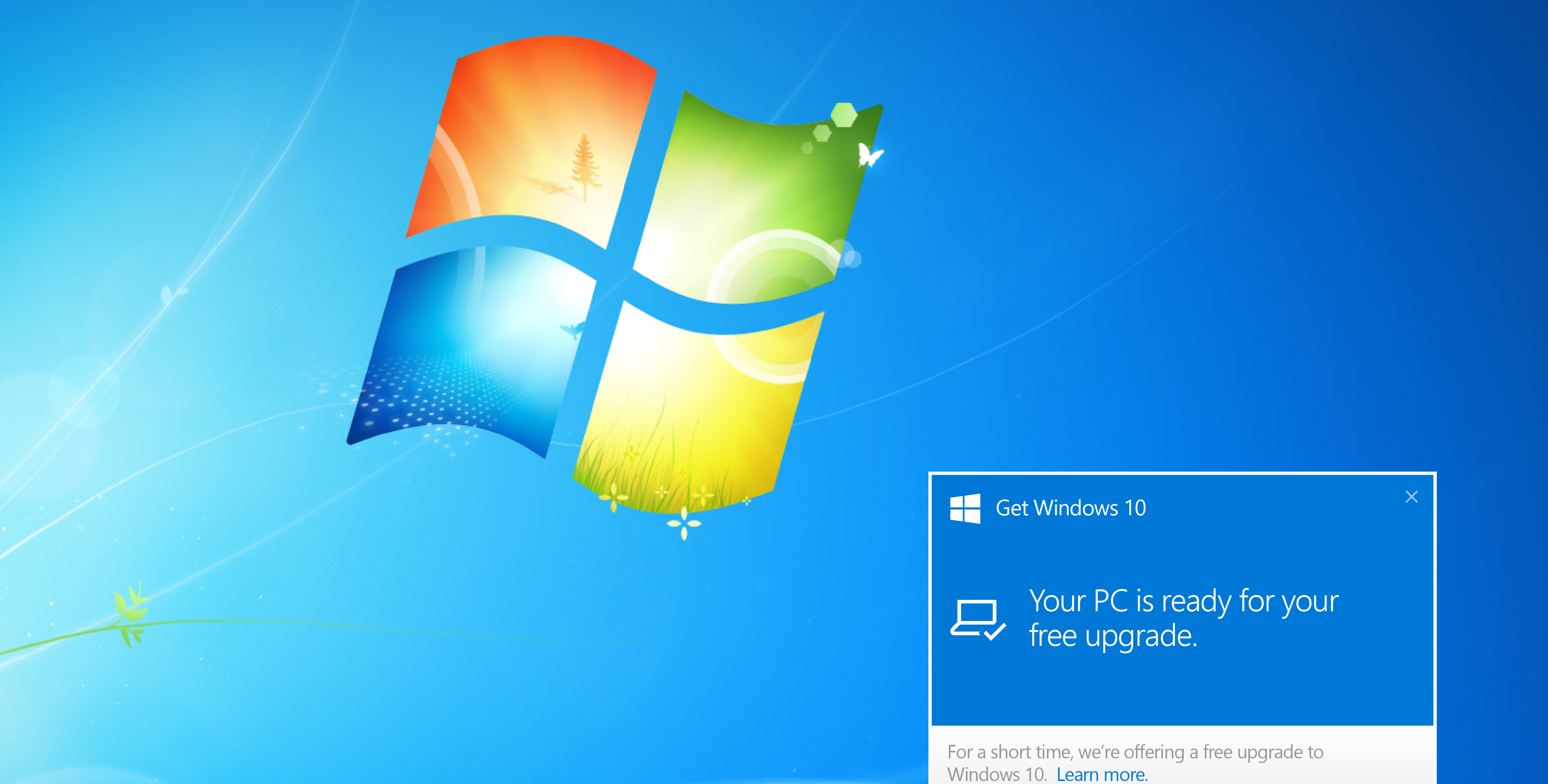 Windows 10 vs Windows 8.1 vs Windows 7 - Microsoft OS head-to-head
Windows 10 vs Windows 8.1 vs Windows 7 - Microsoft OS head-to-headVs We pit Microsoft's most popular operating systems against each other to see which is the greatest of all time
By Mike Passingham
-
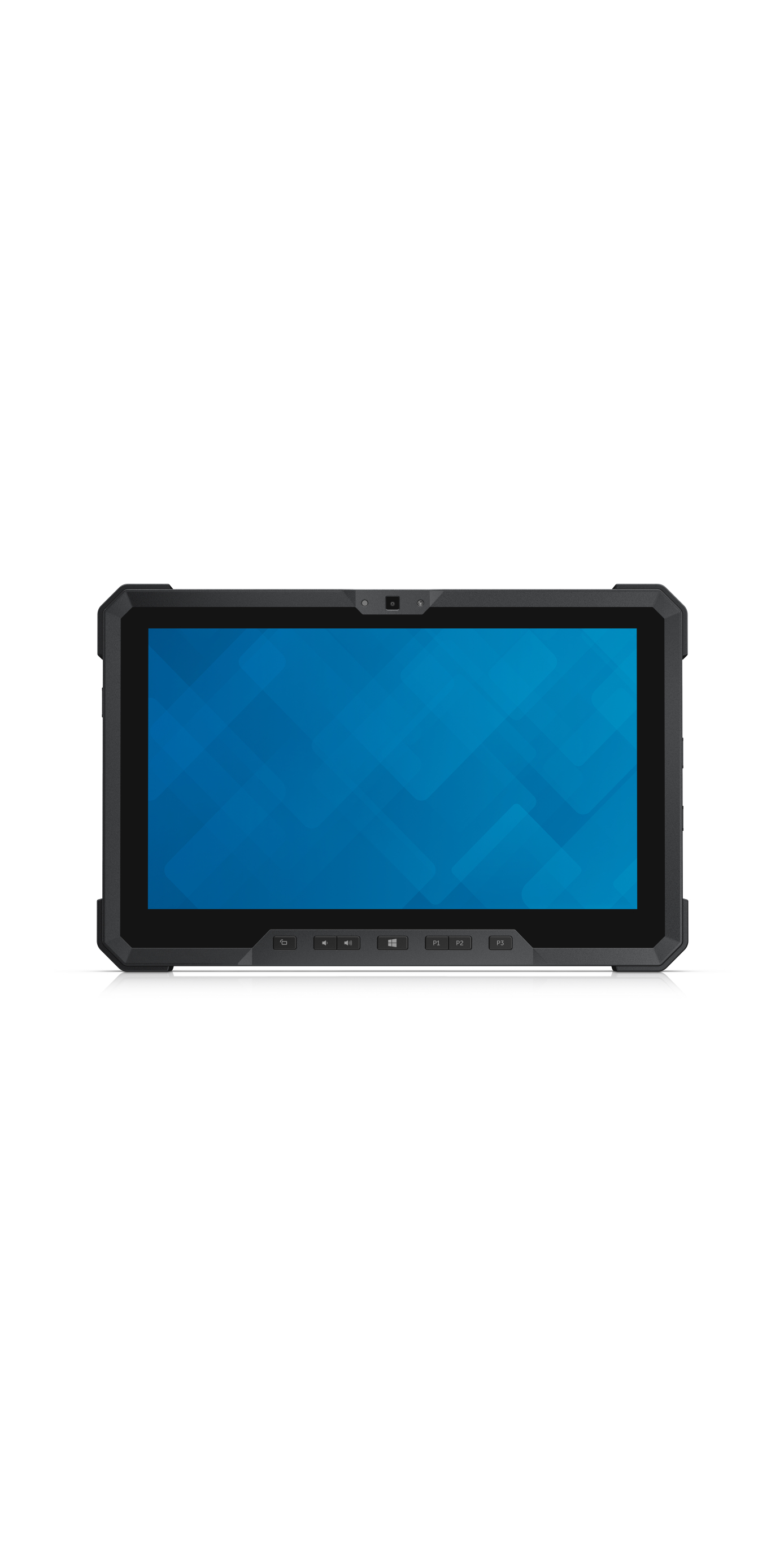 Dell Latitude 12 Rugged Tablet review
Dell Latitude 12 Rugged Tablet reviewReviews Dell's military-grade tablet wasn't rugged enough to survive IT Pro's Adam Shepherd
By Adam Shepherd
-
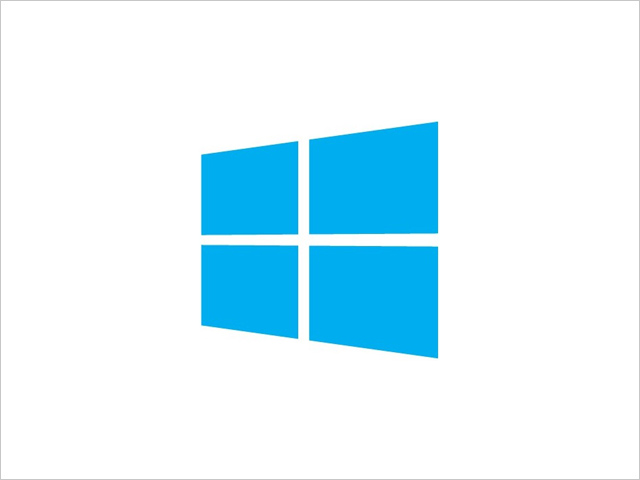 Top 10 Windows 8.1 and Windows 10 apps for 2015
Top 10 Windows 8.1 and Windows 10 apps for 2015Best Our collection of the best and most popular Windows 8.1and Windows 10 apps to download in 2015
By Caroline Preece
-
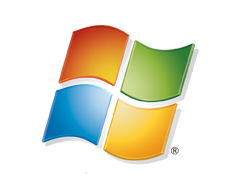 Windows 8.1 vs. Windows 7 – Which is best for you?
Windows 8.1 vs. Windows 7 – Which is best for you?Vs As Windows 10 draws nearer and Microsoft distances itself from older OS, we look at the best option for your PC
By Kyle Nazario
-
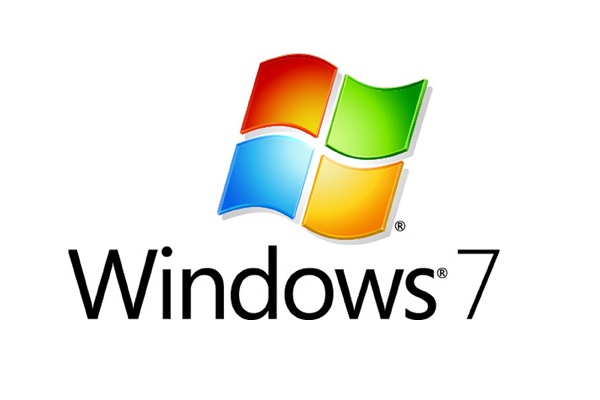 Windows 7 mainstream support ends tonight
Windows 7 mainstream support ends tonightNews When the clocks strike midnight, no more Windows 7 software improvements will come from Microsoft
By Joe Curtis
-
 Windows 8.1 market share leaps ahead
Windows 8.1 market share leaps aheadNews Adoption of Windows 8 and 8.1 shot up in October, marking the OS’ biggest leap in market share to date
By Caroline Preece